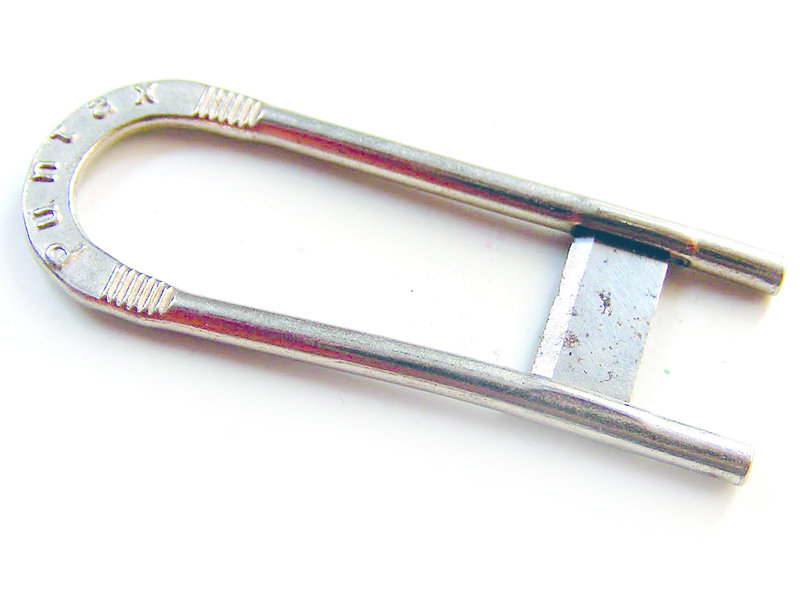Vintage pencil sharpener
For many people, this was once the best way to sharpen pencils without breaking off the lead tip. Puntax made this tool with a sharp blade held in a metallic support. It was very popular in students' pencil cases in the 1960 and '70s, but even for the most skilled it was hard to get a perfectly sharp writing point. And then there was also the safety issue to contend with, as it was all too easy to cut your fingers. As a result, the Puntax sharpener was quickly substituted by the conventional pencil sharpener that we know today, but it remains an object for collectors.
Icon of words Typewriters
An indispensable tool in any office before the invention of computers, the typewriter brought copying documents by hand to an end. One of the most significant inventions of modern times, it was the last step in the industrial revolution. Although typewriters date back to the 18th century, it was not until the mid-19th century that the system became the norm. The typewriter was used for commercial and administrative tasks, as well as journalism. Today's keyboards still follow the same letter arrangement order as typewriters.
Roll film
Roll films were invented in 1888. Kodak made them popular and a hundred years later, at the end of the 20th century, the same company owned the world monopoly of 90% of cameras, roll films and photographic paper. These flexible film rolls, made mainly of cellulose and plastic and impregnated with a photosensitive material, such as silver bromide, were made to take between 24 and 36 photos, which had to be developed in a laboratory. It is estimated that 20 years ago, some 30% of the silver in the world was used by the photography industry. However, this percentage naturally plummeted with the arrival of digital photography. Although film rolls are still being produced, their use and therefore demand has drastically been reduced.
Before email The fax
The fax machine may seem an invention of the 1980s, but is in fact much older, with predecessors from the 1920s. That was when a photo was first sent from New York to London by radio signal. The fax that transmitted over telephone lines started being used in the 1960s by the US army, and was standard by the 1980s in journalism and the administrative departments of companies. In fact, it was the only technological tool at the time that allowed people to receive documents instantaneously. Since the advent of the Internet and emails it is used much less, although it hasn't disappeared. Now the virtual fax, with no need for a machine, is safe, spam-free and has the advantage that users know when the information has been received.
Which way to go? Maps
The first road maps became popular in the early 20th century, in booklet form. As cars became more common, maps gradually became cheaper and took on the shape of leaflets, which were easy to keep in the car's glove box. Yet, the advent of new technology changed everything, as GPS and Google Maps made it easier to consult routes and all kinds of additional information.
Embossing tape labels Dymo
Founded in California in 1958, the Dymo company was the first to introduce embossing tape labelling makers. These sticky labels revolutionised the way information was organised in offices, libraries, shops and archives. Electronic versions of the label makers now exist to label clothing, and a modern version of the label maker is still used in artwork and scrapbook techniques.


